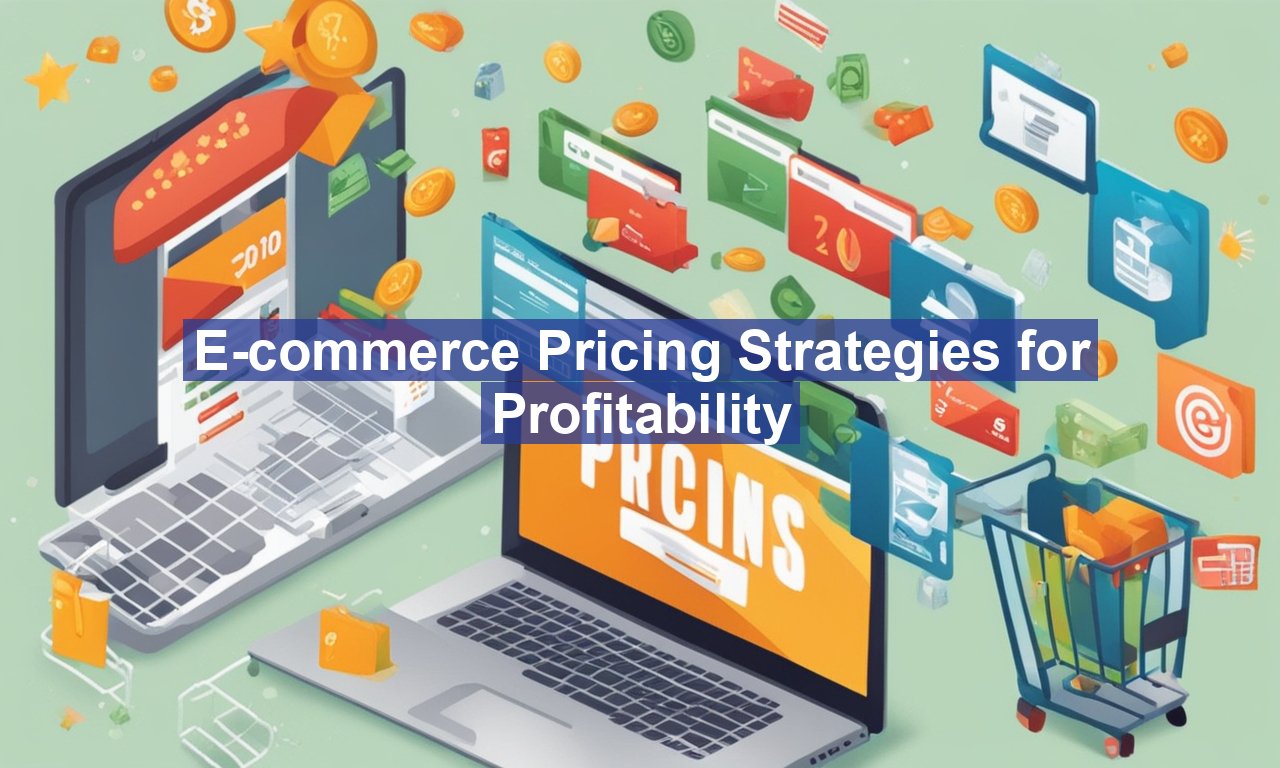E-commerce pricing strategies for profitability, you’re running an e-commerce business and have an entire universe of potential customers at your fingertips. But one critical element determines whether those clicks convert into sales: your pricing strategy.
Smart pricing can turn browsers into buyers, boost profits, and set your brand apart in a saturated market. In this article, we dive into effective e-commerce pricing strategies, offering insights and tips that can maximize your profitability.
E-commerce Pricing Strategies for Profitability Step-by-Step Guide
Understanding Cost-Plus Pricing
One of the simplest and most straightforward pricing strategies is cost-plus pricing. This involves calculating the total cost to produce and sell a product, then adding a markup to ensure profitability. While it ensures coverage of costs, its simplicity may not consider competitor pricing or demand fluctuations.
Benefits of Cost-Plus Pricing
- Simplicity: Easy to calculate and straightforward to implement.
- Cost Coverage: Guarantees cost coverage and is particularly useful for beginner entrepreneurs.
However, for most e-commerce entities, a combination of strategies might deliver more nuanced pricing solutions as it often overlooks market dynamics and customer goodwill.
Competitive Pricing: Playing the Market
Competitive pricing, on the other hand, puts the spotlight on your competitors. By examining market prices, you can decide whether your product should match, be lower, or even higher based on perceived value. This approach is particularly useful in highly saturated markets.
Considerations for Competitive Pricing
- Market Position: Know where your brand stands to price just right.
- Quality vs Cost: Justify a higher price with better quality or unique features.
- Price Wars: Avoid overly aggressive price slashing, which could ignite price wars.
Studying competitors doesn’t just inform the price point; it also tells you a ton about market trends and consumer preferences, paving the way for strategic adjustments. You can find more information about competitive strategies from resources like The Street.
Value-Based Pricing: Delivering Customer Value
Next up is value-based pricing, a strategy that calculates prices based on the customer’s perceived value rather than production costs. This approach can be effective when your products are unique or offer features that competitors do not.
How to Implement Value-Based Pricing
- Customer Feedback: Conduct surveys and focus groups to understand perceived value.
- Unique Selling Proposition (USP): Highlight what sets your products apart.
- Brand Loyalty: Leverage customer loyalty to justify higher pricing.
Ultimately, value-based pricing is about positioning your brand in a way that resonates with customers. For those willing to invest, it’s a strategy that can command higher profit margins. For an example of effective value creation, Harvard Business Review offers insights into the elements of value.
Dynamic Pricing: Flexibility at its Best
Modern technology enables e-commerce platforms to employ dynamic pricing strategies, where prices may fluctuate based on demand, time, or other factors. Think of it as airline pricing but for products.
Advantages of Dynamic Pricing
- Real-time Adjustments: Utilize AI to set optimal prices at any given time.
- Peak Times: Increase prices during high-demand periods.
- Excess Inventory: Discounts to clear stock quickly.
Dynamic pricing offers flexibility and competitive advantage, allowing businesses to maximize profits through intelligent software solutions. It’s a game-changer in industries that experience rapid demand changes. Learn more about dynamic pricing methods from Investopedia’s dynamic pricing explanation.
Psychological Pricing Tactics
Ah, the wonderful world of consumer psychology! Psychological pricing tactics leverage the way customers perceive numbers and make decisions. Some examples include setting prices slightly below a round number (think $9.99 instead of $10) or using flash sales to create a sense of urgency.
Key Psychological Pricing Strategies
- Charm Pricing: Pricing ends in .99 or .95 to make the product feel less expensive.
- Limited-Time Offers: Urgency can significantly boost sales.
- Decoy Pricing: Offer multiple versions, pushing consumers towards a preferred option.
These strategies exploit shared human tendencies to increase conversion rates effectively. Used wisely, they can be just as powerful as other sophisticated pricing strategies.
Freemiums and Tiered Pricing: The Modern Way
Finally, consider freemiums and tiered pricing, which have gained traction in digital products and services. Freemiums offer a basic version of a product for free, while tiered pricing provides access to additional features or services at varying price levels.
Implementing Freemium and Tiered Pricing
- Identify Core Features: Determine what will be free and what is premium.
- Encourage Upgrades: Use nudges and reminders to migrate free users to paid tiers.
- Analyze Data: Regular analysis of user behavior to refine pricing models.
These strategies are particularly appealing for products with low marginal costs. They provide customers with a taste of the product and encourage paid upgrades over time, ensuring sustained profitability.
Conclusion
E-commerce pricing strategies for profitability while there’s no one-size-fits-all answer to pricing on e-commerce platforms, blending these strategies can help achieve your financial goals. The key lies in understanding your market, knowing your customers, and keeping an eye on both internal and external factors. Good luck, and happy selling!


